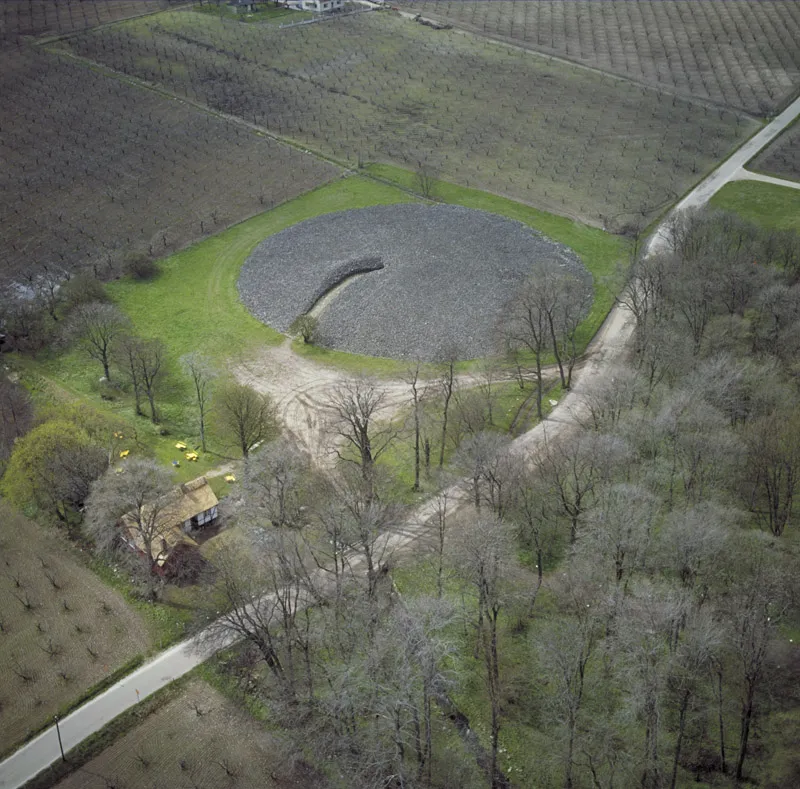Bredarör is a significant archaeological site located on the island of Kivik in southern Sweden. It is most famous for its large Bronze Age burial mound, which is one of the most remarkable prehistoric monuments in the region. The site has attracted attention due to its size, intricate stone carvings, and the mystery surrounding its original purpose and the people who built it.
Get your dose of History via Email
Historical Background of Bredarör
The discovery of Bredarör dates back to the 18th century when local quarrying activities accidentally exposed part of the site. It was in 1748 that the first recorded excavation took place, led by the Swedish antiquarian Bengt Ferrner. The site’s significance became apparent as the excavation revealed a series of stone slabs with intricate carvings, which are unique to the Nordic Bronze Age.
Archaeologists believe that the mound was constructed by the local Bronze Age community, which thrived in the region around 1500-1000 BC. The mound’s size and the effort required to build it suggest that it was an important ceremonial site, possibly for a person of high status. However, no human remains were found during the initial excavations, leading to various speculations about its use.
Over the years, Bredarör has been the subject of multiple archaeological studies. These have provided insights into the construction techniques and the cultural context of the site. The mound was built using large stones and earth, and it was originally much larger than what is visible today. The site has also revealed a connection to the sun cult, which was prevalent during the Bronze Age.
While Bredarör has not been the scene of any known historically important events, its significance lies in its representation of Bronze Age society and beliefs. The site has not shown evidence of later habitation, which suggests that it remained a ceremonial site throughout its history. Its preservation allows for ongoing research and interpretation of the prehistoric past.
The site’s importance is recognized not only by archaeologists but also by the local community and visitors. Bredarör is a protected monument and is part of the cultural heritage of Sweden. It continues to be a source of fascination and study, contributing to our understanding of the Bronze Age in Scandinavia.
About Bredarör
Bredarör stands as a testament to the engineering skills of the Bronze Age people. The mound measures approximately 75 meters in diameter and was originally much higher than its current height of 3.5 meters. The construction involved an intricate arrangement of large stones, some of which are decorated with carvings depicting ships, sun symbols, and other motifs.
The carvings on the stones are particularly noteworthy. They are among the best-preserved examples of Bronze Age art in Scandinavia. The motifs reflect the cosmological beliefs and rituals of the time, with the sun ship being a recurring theme, which suggests a strong maritime culture and sun worship.
The building materials for Bredarör were locally sourced. Large boulders and stones were used to create the cairn, while smaller stones and earth were used to fill in the gaps and cover the structure. The construction would have required a significant communal effort, indicating the mound’s importance to the society that built it.
Architecturally, Bredarör does not resemble the typical burial mounds found in other parts of Europe during the same period. Its unique features have led to much interest in understanding the specific cultural practices in this region of Scandinavia during the Bronze Age.
Despite its age, Bredarör has remained relatively intact. This is partly due to the protective measures taken by the Swedish government and the respect for the site by the local community. The preservation of the mound allows for continued archaeological research and provides a tangible connection to the distant past.
Theories and Interpretations
Several theories have been proposed regarding the purpose of Bredarör. The most widely accepted theory is that it served as a burial mound for a person of high status, possibly a chieftain or a king. This is supported by the mound’s size and the elaborate carvings, which suggest a significant investment of resources and labor.
However, the absence of human remains or grave goods has led some to question the burial mound theory. Alternative theories suggest that Bredarör could have been a ceremonial site used for rituals related to the sun cult or as a landmark for navigation due to its proximity to the sea.
The carvings on the stones have been closely examined to gain insights into the beliefs and practices of the Bronze Age people. The motifs have been matched to similar symbols found in other Nordic Bronze Age sites, reinforcing the idea of a shared cultural and religious framework across the region.
Dating of the site has been carried out using various methods, including radiocarbon dating and dendrochronology. These techniques have helped establish the timeline of the mound’s construction and use, placing it firmly within the Nordic Bronze Age.
The interpretations of Bredarör continue to evolve as new archaeological methods and technologies become available. Each discovery adds to the understanding of the site, while also raising new questions about the people who built it and their way of life.
At a glance
Country: Sweden
Civilization: Nordic Bronze Age
Age: Approximately 1500-1000 BC

